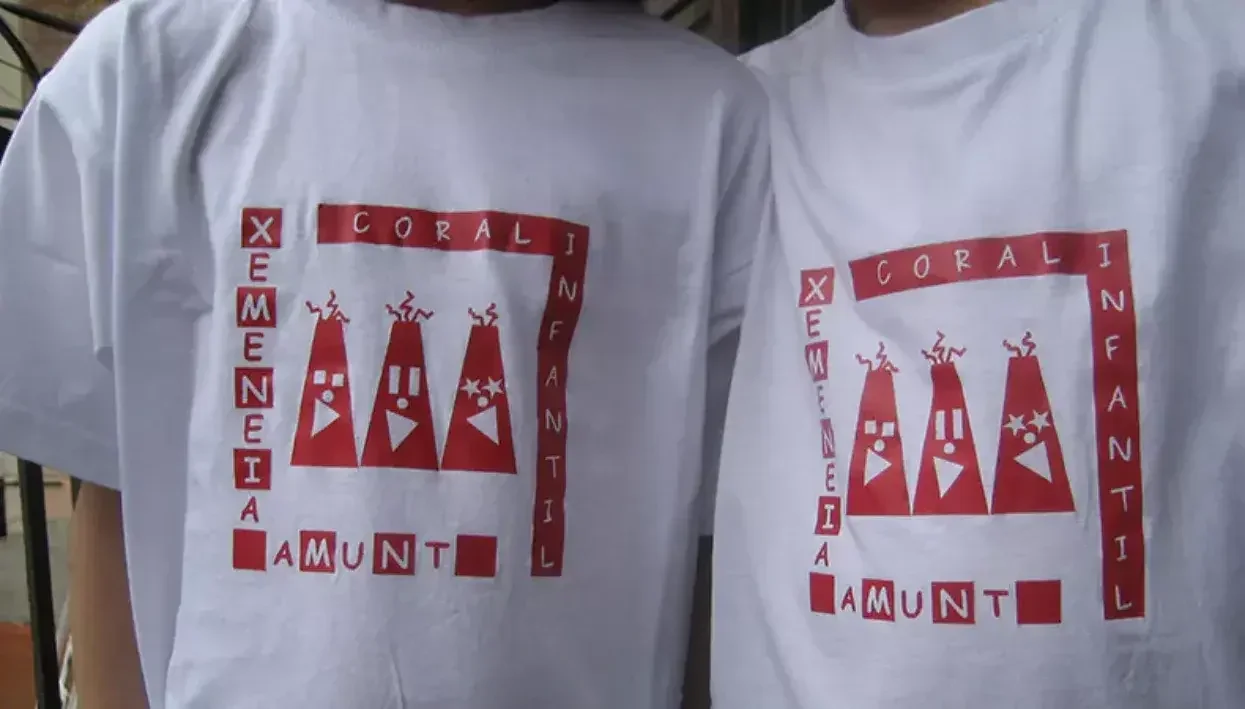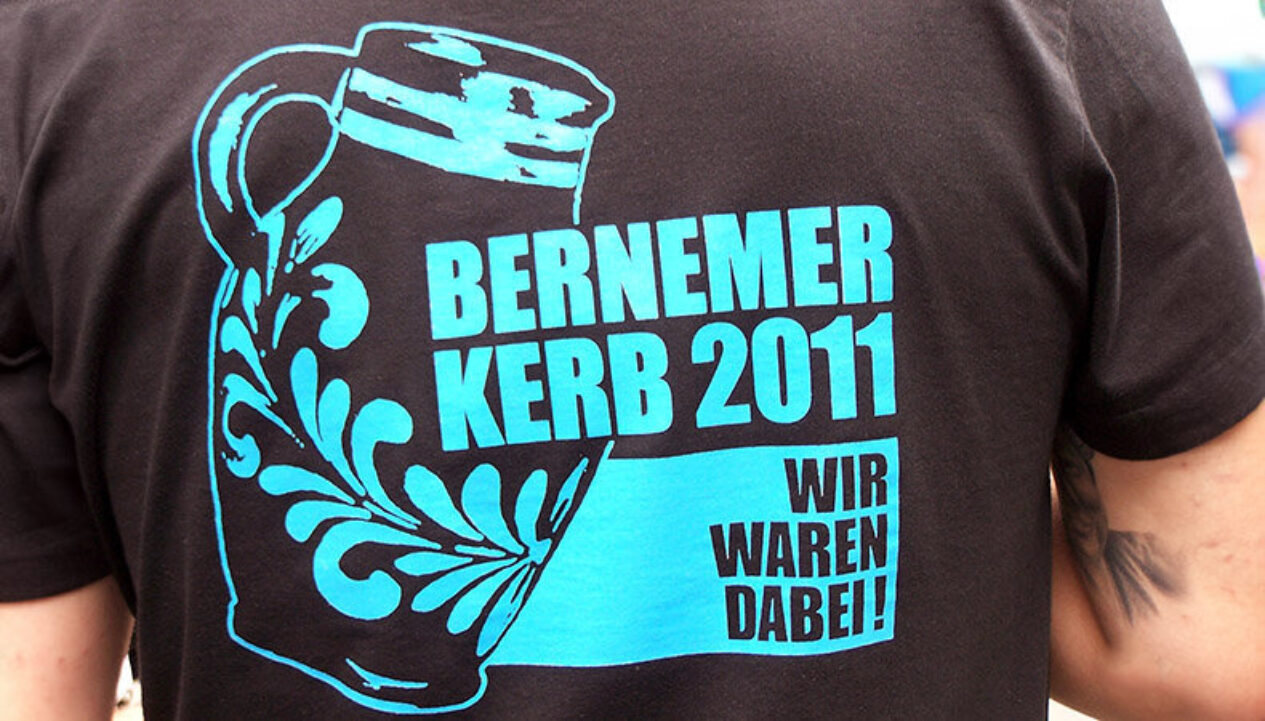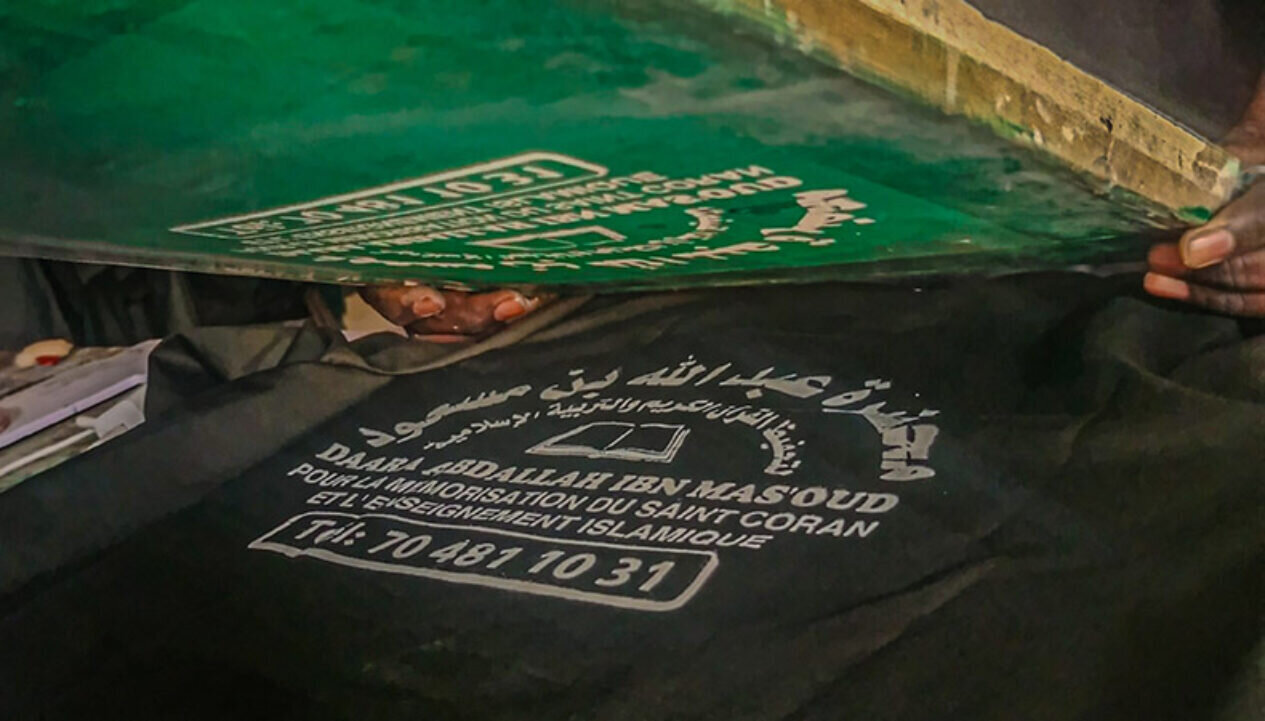
Today, it seems that digital printing is outperfoming screen printing across numerous sectors. Sonja Angerer discusses how this is not the case concerning promotional t-shirts and other garments featuring logos. In this article, Sonja shares how screen printing is regaining its popularity as a perfect technique for creatining sustainable and eco-friendly t-shirts.
Screen printing, advertising and pop culture are interlinked. This has been the case since artists such as Andy Warhol or Roy Lichtenstein became popular. The famous band T-shirts of the 1960s to 1980s would not have been possible without the use of screen printing on textiles. The process is known for its brilliant colour results.
For the stencil printing process, the printing ink is applied to the textile using a squeegee through a fine-mesh screen. Each colour of the motif is printed individually and one after the other onto the material. This allows specialists to achieve a high level of precision and detail when implementing designs. Screen printing is possible as four- and multi-colour printing and can be printed using solid colours.
Screen printing on textiles is now primarily used for promotional t-shirts, caps, as well as fabric bags. It is also often used to print merchandise and work clothing.
Monochrome logos are often featured in promotional t-shirts where screen printing is used.
Image Credit: Urmel representative , – Own Work , GNU

Is screen printing on textiles sustainable?
Screen printing works on almost any fabric, although products with a high cotton content are recommended. Cotton provides a smooth surface that allows for ink absorption. This ensures a high-quality printing result and is attractive for advertisers.
But blended fabrics and synthetic materials can also be used. Screen printing inks for textile printing are available for all types of fabrics, whether for natural or synthetic fibres. With appropriate pretreatment, you can even print on textiles that have a water-repellent coating.
A screen must be created for each colour in analogue logo printing. This process and the subsequent removal of the screens require a lot of chemicals, especially volatile organic solvents (VOCs). When setting up a screen printing job for advertising t-shirts or other textiles, misprints are also a common occurrence which increases the amount of waste.
But there is one major advantage of screen printing: it has high wash resistance. The colours remain bright even after several washes and the textile retains its original properties. This means that promotional t-shirts and other printed clothing can be used for a very long time. This in turn contributes greatly to reducing the ecological footprint of fashion.
For screen printing on promotional t-shirts, a print template is required.
Image Credit: By 4MAPS – Own work, CC BY-SA 4.0,

Adding Personalisation to Screen Printing
When people think of personalising promotional textiles, they usually think of DTG or DTF printing. However, screen printing can produce unique pieces. Hobby artists and brands targeted at a younger demographicare discovering the many possibilities offered by a simple hand-held screen printing table. For example, you can produce dozens of individual t-shirts with a single screen, simply by varying the colour and strength of the print.
In addition, used textiles can also be refined with screen printing, this is ideal for upcycling second-hand fashion. Used hand printing tables are available for a reasonable, low cost. Professional screen printing specialists still requires a lot of experience and qualified training. However, specialists from related industries such as advertising technology or trade fair construction and even interested laypeople can quickly learn how to produce simple, one or two-colour logos on advertising t-shirts or other motifs.
This means that promotional t-shirts can easily be produced regionally using screen printing. This not only reduces the proportion of carbon emissions that is generated for delivery routes. It also ensures fair and secure jobs that help to sustainably stabilise local communities. Screen printing remains perfectly suited and cost-effective for larger quantities or print. This still makes screen printing an ideal choice for company t-shirts, band shirts or other team outfits.
Is screen printing on promotional t-shirts still popular?
Currently, screen printing technology is being sidetracked by digital printing methods but once again is now gaining popularity due to the need to have more sustainable, promotional t-shirts.
When it comes to producing band T-shirts and other merchandise, screen printing is still the first choice for many customers due to its durability. Therefore, it still offers a reliable and effective solution for textile printing and the production of textile promotional items. This is more obvious when it is cleverly combined with digital printing. Manufacturers such as A eoon Technologies offer complete solutions for this, so that even large quantities of promotional t-shirts can be produced individually, quickly and inexpensively using both screen and digital printing.
The future of promotional t-shirts and the entire clothing printing industry is changing. New customer needs and the trend towards greater sustainability are changing both the advertising and fashion industries. But one thing is already certain: screen printing will continue to be a part of it in the future.